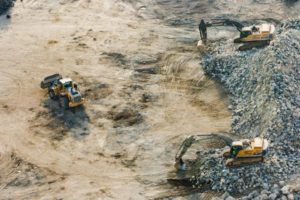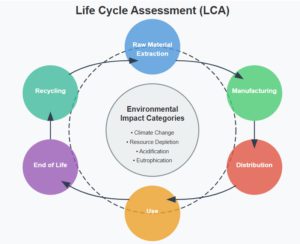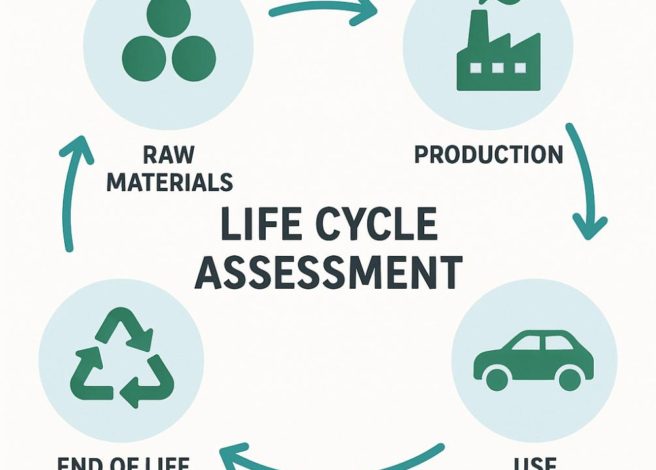At a Glance
- A life cycle assessment can help businesses reduce environmental impact, tracking effects from raw materials to end-of-life.
- It reveals trade-offs like material weight vs. emissions, enabling smarter packaging decisions.
- LCAs drive innovation in reuse, recycling, and material sourcing across the supply chain.
- Sharing LCA results builds trust, aligning brands with sustainability goals and customer expectations.
When you hear the term “Life Cycle Assessment,” or LCA, it may conjure images of reflecting on your own journey — evaluating how far you’ve come, what you’ve achieved, and ultimately, what legacy you’ll leave behind. That’s some pretty deep stuff! But in the world of packaging sustainability (plot twist!), it’s actually quite similar, just less of an existential “Forrest Gump” reflection and more of a scientific measurement.
For food industry professionals, LCAs are key for brand reputation and profits. They offer solid data to support sustainability claims. They also help prepare for changing regulations and can lower costs. More shoppers are choosing products for their environmental benefits. Thus, food companies must pay attention. Governments are also setting new packaging rules. To stay competitive, these companies can’t overlook these factors.
We recently sat down with Conor Carlin, founder of Clefs Advisory LLC. Conor brings a wealth of experience to the table, having just completed his term as the 2024 President of the Society of Plastics Engineers and previously serving as General Manager for ILLIG‘s North American operations. His professional journey has made him an authority at the intersection of packaging and sustainability, with extensive knowledge across materials, packaging systems, recycling technologies, policy frameworks, commercial strategy development, and market intelligence.
Let’s take a deeper look at LCAs and assess what these assessments are assessing. (Wasn’t that fun to say?)
What is an LCA?
 A Life Cycle Assessment (LCA) evaluates the environmental impact of a product or service throughout its life. It starts with raw material extraction, called “cradle.” Then, it goes through production and use. It concludes with disposal, referred to as “grave.” This is like an environmental accounting system. It tracks carbon emissions, water use, land use, and pollution.
A Life Cycle Assessment (LCA) evaluates the environmental impact of a product or service throughout its life. It starts with raw material extraction, called “cradle.” Then, it goes through production and use. It concludes with disposal, referred to as “grave.” This is like an environmental accounting system. It tracks carbon emissions, water use, land use, and pollution.
For food packaging pros, LCAs offer key data on packaging materials. This helps companies make smart choices that weigh environmental effects and business needs.
What is an LCI?
A Life Cycle Inventory (LCI) is the sum of all data collected, inputs and outputs, about a product or service throughout its life cycle. This data is the foundation on which LCAs are subsequently created. LCA practitioners will then use LCI databases or software tools to classify results based on their environmental impact. Those results are then converted and normalized into common units, e.g., Global Warming Potential (GWP) expressed as metric tons of CO2 equivalent (CO2-e).
Breaking Down the Assessment
LCAs aren’t one-size-fits-all. They come in different levels of detail and complexity:
- Phase one: Basic assessments that define the goal and scope of the study
- Phase two: More comprehensive, Life Cycle Inventory (LCI), ISO (International Organization for Standardization)-compliant assessments with data gathering, inventory analysis, peer reviews, and greater scientific rigor
The assessment boundaries can also vary:
- Cradle-to-gate: From raw materials to when the product leaves the factory
- Cradle-to-grave: The complete life cycle, including disposal
- Cradle-to-cradle: Including the recycling or reuse of materials
Why LCAs Matter in Food Packaging
For food industry professionals, LCAs offer several significant benefits:
Comparing Packaging Options with Real Data
Was your polypropylene clamshell made with sustainability in mind? A life cycle assessment can tell you with hard numbers rather than assumptions. Different materials affect the environment in various ways. LCAs help us compare these impacts across several categories. Here are some examples of these areas: 
- Climate change (greenhouse gas emissions)
- Water usage
- Resource depletion
- “Particulate matter production,” which is a fancy way of describing the release of solid and liquid particles into the atmosphere
- Land use impacts
Meeting Corporate Sustainability Requirements
Major food brands are increasingly requiring detailed environmental data from their packaging suppliers. An LCA provides the comprehensive information needed for:
- Corporate Social Responsibility (CSR) reports
- Task Force on Climate-related Financial Disclosures (TCFD)
- Carbon Disclosure Project (CDP) submissions
- Environmental, Social, and Governance (ESG) reporting
Also, by performing detailed LCAs, companies will acquire the information they need on their own Scope 3 Greenhouse Gas (GHG) emissions for additional reporting.
Financial Implications of a Life Cycle Assessment
LCAs aren’t just about environmental virtue — they may directly impact your bottom line:
- Reducing potential carbon tax exposure
- Identifying energy and resource inefficiencies
- Preparing for Extended Producer Responsibility (EPR) programs (they’re coming!)
- Qualifying for fee reductions in states with packaging regulations
The Life Cycle Assessment Process in Practice

Let’s say you’re assessing a plastic (PET) clamshell container. Your LCA will include:
- Raw material extraction: Environmental impacts of fossil fuel use for virgin plastic (the base polymer)
- Manufacturing: Energy usage, water consumption, and emissions during production (converting polymer to sheet and thermoformed parts, for example)
- Transportation: The carbon footprint of moving materials and finished products
- End-of-life: Different disposal scenarios (landfill, recycling, incineration)
The process includes picking the right methods and databases and setting boundary conditions. You might compare several scenarios, such as different percentages of recycled content.
Getting Started with a Life Cycle Assessment
For food packaging companies considering an LCA:
- Define your goals: Are you comparing materials? Meeting customer requirements? Preparing for regulations?
- Determine impact categories: Which environmental impacts matter most to your company and customers?
- Consider your budget: A basic assessment might cost less, but a comprehensive ISO-compliant LCA with peer review provides greater credibility. Typical phase-two packaging LCAs can cost $60,000 or more and take 3–6 months to complete.
- Choose comparisons wisely: Compare similar product categories for meaningful results.
The Future of LCAs in Food Packaging
Maryland just became the seventh state to pass EPR (Extended Producer Responsibility) laws, so LCAs will matter more — and soon. Some programs already offer fee reductions for companies with verified LCAs and for packaging designs that show environmental improvements.
Companies that act now will be ready to respond more nimbly to regulatory changes.
The Final Assessment
 For food industry professionals, understanding LCAs isn’t just about environmental stewardship — it’s about smart business. These assessments offer the data to make informed choices. They help fulfill customer needs and meet regulations. Plus, they can lower costs by improving efficiency and reducing fees.
For food industry professionals, understanding LCAs isn’t just about environmental stewardship — it’s about smart business. These assessments offer the data to make informed choices. They help fulfill customer needs and meet regulations. Plus, they can lower costs by improving efficiency and reducing fees.
A complete life cycle assessment takes time and money, but it offers valuable insights. These insights can help you make smart decisions about materials, manufacturing, and design. This way, you can support your business and the environment.
LCAs aren’t perfect, but they’re the best tool we currently have to quantify and improve our environmental footprint. In a world of increasing environmental scrutiny, that’s something no food packaging professional can afford to ignore.
Are you interested in learning more about sustainable practices? Visit the Inline Plastics Learning Center today! If you still have any questions, don’t hesitate to reach out to us! We’re here to help.
Would you like to know more about Conor Carlin and his work at Clefs Advisory LLC? Connect with him on LinkedIn today.

